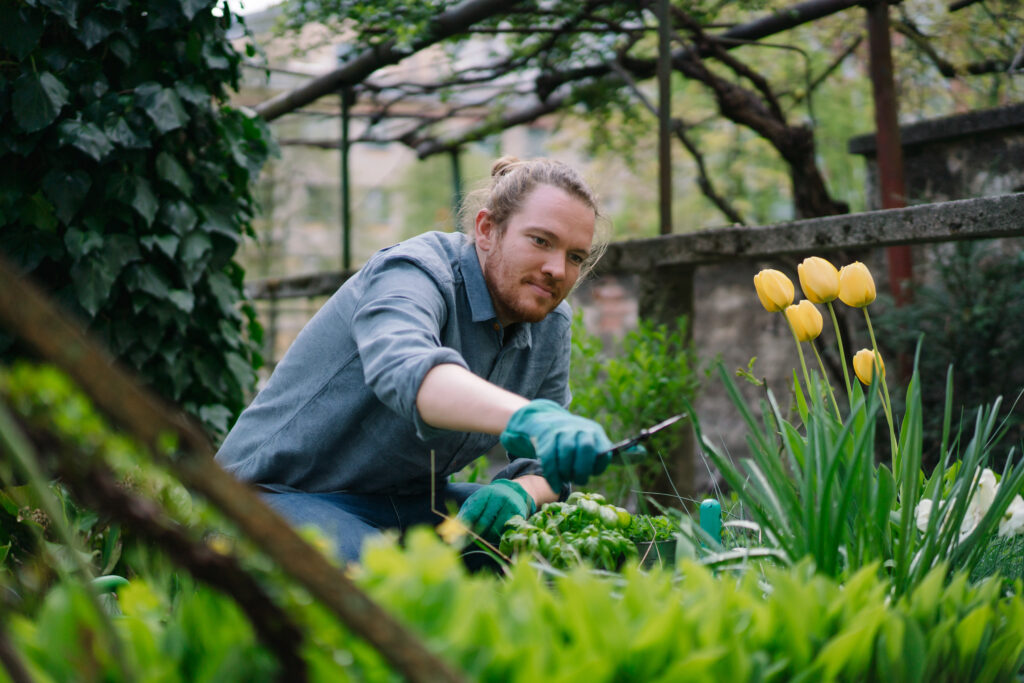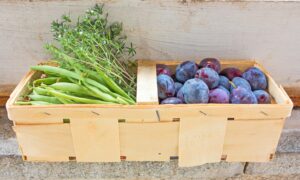
April 6, 2022
What better way to celebrate National Garden Month than by making your own garden? Yes, gardening can be tricky and challenge you in ways you were not expecting. Even if you don’t have a gardener’s thumb, gardening is available for anyone willing to try.
If you’re interested in starting your own garden or becoming more proficient, follow these six simple steps to ensure success:
1. Determine What to Grow
 The first thing you’ll need to decide is what plants to grow. Does your family love fruit? Are you interested in growing an herb garden? Which flowers would you love to see and smell when you step outside your home?
The first thing you’ll need to decide is what plants to grow. Does your family love fruit? Are you interested in growing an herb garden? Which flowers would you love to see and smell when you step outside your home?
The National Gardening Association has many great tools like their Garden Calendar Planting Guide which tells you exactly when to plant common vegetables that thrive in your region or location. Our handy garden planting calendar will help you keep track of what plants and veggies you decide on and when you planted them.

If you’re not sure what plants to begin with, start with one or two that you love. Starting slow will help you focus your attention on something you’re excited about and more likely to care for.
When deciding what to grow, you’ll also need to consider what will survive in your area. First, discover your hardiness zone using our calculator. Next, find the average last freeze date in your area (you can do that here) to protect delicate plants from the last-minute freezes. Every plant is different, and each one can only withstand certain temperatures.
You can go to About USDA Plant Hardiness to learn more about how gardening plans can be affected by your region.
2. Decide on a Planting Location
Next, you’ll have to determine the planting location. Keep the following aspects in mind when choosing a spot for your garden:
- Sun exposure. Most plants should be exposed to the sun for 6 hours every day. Other plants, such as Primrose, can grow well in the shade. Keep this in mind when deciding where to place your garden.
- Easy access. Ensure the spot you choose is suitable for picking, watering, and daily care. You will be going back and forth tending your plants often. Finding a close enough spot while also allowing adequate sun exposure is ideal. Additionally, placing a garden on a slanting hill may be hard to maintain, so keep this in mind.
- Check for moving objects. Plants are delicate and are at the mercy of most moving objects. Try to avoid areas where children play, spots where wildlife gather or travel often, and of course, where pet damage is most likely to occur.
Once you’ve decided what to plant and where to place the garden, a good rule is to determine the actual size. Use our simple Lawn Size Calculator to see your total square footage.
3. Prepare & Optimize Your Soil

Plants and vegetables that require more nutrients (I.e., eggplant, pumpkins, and tomatoes) thrive in soils composed of highly diverse organic materials. So, whether you are growing basketball-sized watermelons or delicate daisies, it’s essential to check your soil and make changes if needed.
Learn more about soil optimization in our blog 5 Ways to Easily Optimize Your Soil.
4. Watering Your Plants
The fourth step in this guide might be the most important; watering your plants.
Knowing the right plants for your region, when to place them in the ground, and optimizing your soil can go out the window if you don’t water them right. That means watering at the right time can make or break any gardening goals you may have. Follow these watering tips:
- Don’t let seedlings dry out if you’re starting plants from scratch. Instead, water every day and taper off as the plants mature.
- Transplants need regular irrigation until their roots are established; watering every other day will do. Once the plants have grown for 6-8 weeks (about 2 months), the watering frequency will slow down. Check out Melnor’s water timers for an easy set it and forget it option to keep your garden watered efficiently.
- Watering varies based on your soil, humidity, and rainfall. A good rule of thumb is once a week to start.
Note: Clay soil dries slower than sandy soil; thus, requiring less watering. Sunny, windy weather dries the soil faster than cold, wet weather, so water more frequently in these conditions.
Still not sure how much to water? Stick your fingers 3-4 inches down in the soil; check the moisture level. If it seems dry, wet it. Water slowly and thoroughly so it soaks in rather than running off.

Early-morning watering reduces evaporation.
That is why timers like Melnor’s Sunrise Once-a-Day Water Timer, which water as the sun rises in the morning, are so effective for growing plants.
Don’t want to measure the soil moisture with your hand? Check out these other ways:
- Check Your Flow Rate. First, simply multiply the square footage of the garden section you plan to grow by 0.93 (1.5 inches of water per sq. ft). This will give you the total water you need (in gallons) to water your garden properly. Next, divide this number by your Melnor® sprinkler’s flow rate (GPM). This will tell you the number of minutes required to disperse 1.5 inches of water per square foot.
- 1 inch of water/ Sq. Ft. = 0.62
- ½ inch of water/ Sq. Ft. = 0.31
Formula
Step 1:

Step 2:


- Use Water Timers. The last way to check if you watered your lawn enough involves water timers. Choose a water timer, such as the Melnor® Flowmeter Water Timer, that can measure and dispense water in hundreds of gallons. Using our lawn size calculator, determine the square footage of the section you are trying to water and multiply by 0.93 (1.5 inches of water per sq. ft). This will give you the total water required in gallons. Once you have that number, simply turn the water timer’s knob to the amount of water you’ll need to dispense.
5. Planting Care
Maintenance and proper care don’t have to be complicated; just make sure you’re paying attention. In the initial stages, many changes occur, so it’s important to be ready to step in when plants need adjusting.
Watch for plant disease, abnormal growth patterns, and wildlife that enjoy tasting your crops.
Learn more about ways to prevent wildlife in your garden.
6. Harvesting Happiness

Lastly comes harvesting. Most importantly, don’t pick too soon. We tend to be impatient as gardeners and pick too quickly or become distracted and pick too late. Take it slow and allow each plant the necessary time to reach full maturation. If you’re hoping to harvest fruits or vegetables by a certain date, make sure to plan ahead.
If you have decided to go a different route and plant flowers, check our blog, 3 Unique Ways to Preserve Bouquets or Cut Flowers, for inspiration on cute vase and bouquet ideas.




